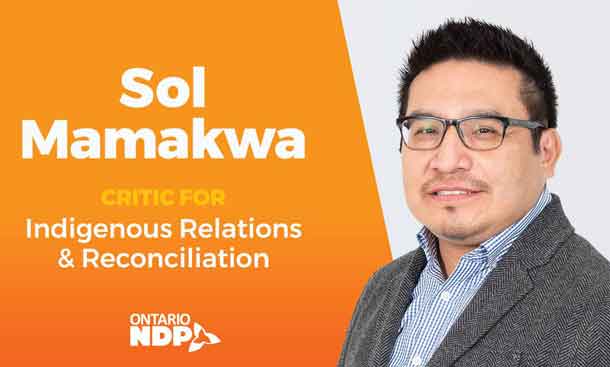KENORA – Grassy Narrows First Nation is getting a treatment centre for Mercury poisoning and issues resulting from long-term exposure to the element from the waters of the English River – Wabigoon Water system.
Kenora-Rainy River MP Greg Rickford offers insight and comments on this important move to help the people in Grassy Narrows.
Marc Miller, Minister of Indigenous Services and Chief Rudy Turtle of the Asubpeeschoseewagong Netum Anishinabek (Grassy Narrows First Nation) signed a framework agreement to provide federal support to the community to support the mercury care home.
This facility will provide access to health services to meet the needs of community residents who are living with methylmercury poisoning.
Through this framework agreement, Indigenous Services Canada will provide $19.5 million to Asubpeeschoseewagong Netum Anishinabek towards the construction of the mercury care home, supporting a design the community envisioned. Furthermore, Indigenous Services Canada is working towards obtaining additional funding to support the operation of the mercury care home. The Government of Canada is committed to working with Asubpeeschoseewagong Netum Anishinabek to ensure this vital project is completed.
Minister Rickford says, “I am pleased to hear that the federal government has come to an agreement with Grassy Narrows to move forward on their commitments to Grassy Narrows. Ontario will continue to work with federal government and Grassy Narrows First Nation to provide technical advice on service planning for the proposed health facility.
“Our government takes the challenges faced by the people of Grassy Narrows and Wabaseemoong very seriously. That’s why one of our first acts as a new government was to index mercury disability benefit payments to people who hadn’t seen increases for inflation in as many as 30 years. As a result, people saw their monthly payment amounts more than double beginning November 2018, in addition to retroactive payments.
“We want to achieve real progress in developing solutions that lead to improved outcomes and create prosperous, healthy and strong communities for the people who live there.”
Quick facts
- High level of mercury contamination in the English-Wabigoon River system, discovered in 1970, caused very high levels of mercury exposure among people residing in Asubpeeschoseewagong Netum Anishinabek and Wabaseemoong. Levels of exposure in the late 1960s and 1970s were sufficient to cause mercury poisoning among several highly exposed community members. The Government of Canada completed extensive annual monitoring for mercury in Asubpeeschoseewagong Netum Anishinabek and Wabaseemoong First Nations, as well as other nearby communities, between 1971 and 2000.
- Federal and provincial governments, together with two pulp and paper mill companies (Reed Limited and Great Lakes Forest Products Ltd), paid a total of $16.67 million in a one-time compensation payment to Asubpeeschoseewagong Netum Anishinabek and Wabaseemoong First Nations, based on a 1985 Memorandum of Agreement.
- The governments established the Mercury Disability Board in 1986 to oversee the administration of a trust fund for benefits that are paid to claimants showing symptoms of past mercury poisoning.
- Indigenous Services Canada has been working with Asubpeeschoseewagong Netum Anishinabek leadership on two distinct projects that will meet the short and long-term health needs of the community: the construction of a new mercury care home and the expansion and renovation of the community’s current health facility.







